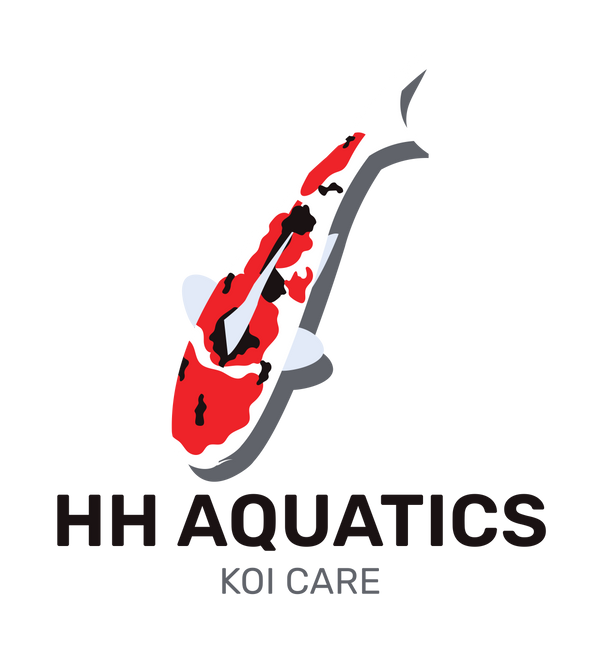Koi Care - Diseases & Treatment
Disease can strike Koi at any time - sometimes the cause is not obvious. However, we do know that Koi are most susceptible to disease when water parameters are poor or the chemical makeup of water changes dramatically over short period of time. For example if PH (Potential Hydrogen), swings from alkaline to acid within an hour, our Koi immune systems can be compromised. Sometimes significant PH crashes can cause 100% morbidity in a pond. Prolonged exposure to ammonia and nitrite can also impact Koi health as can lack of shade and constant stressors such as loud noises/bangs etc. Even the most caring and cautious of Koi keepers can experience illness and disease in their pond; I know I have!
Common Diseases
The most common problems Koi keepers face are parasites and sores/fungus. Often when the early signs of parasites are missed/ignored, secondary bacterial infections take hold in the form of wounds and sores. This is because open wounds are susceptible to bacterial infections.
Parasite 1 - Trichodina
Trichodina or “Trich” is a Protozoan and is easily identified under microscope because they look like flying saucers. They also can be seen spinning in circles at 100x, 200x and 400x. They attach to the Koi skin and gills using hundreds of tiny hooks. Treat with Malachite Green and Formlain or Potassium Permanganate. If you have sensitive fish (sturgeon, Rudd or order), you can use Malachite Green on its own. They can live a while without a host and their reproductive time can mean careful treatment over several weeks. Trichodina viewed at 600x:

Parasite 2 - Argulus (fish lice)
The Argulus is a nasty parasite which can cause Koi serious distress. Koi are often seen scraping themselves against the sides or bottom of the pond repeatedly and aggressively when they have lice. If you look closely, you can see lice attached to your koi with the naked eye. It looks like a dark coloured lump about 3-5mm. The open wounds left by Argulus are susceptible to secondary bacterial infections.
They can be removed by hand to provide instant relief to your Koi. Disinfect the wound with ulcer treatment and protect with propolis.
Argulus seen through iPhone camera (zoomed in):
Parasite 3 - Skin Flukes and Gill Flukes
My personal experience is that Gill Flukes are worse than Skin Flukes. They cause more harm (impact respiration) and appear harder to eradicate. Under a microscope, they look similar but Skin Flukes have a crown with many tentacles! They can be seen at 100x but are very obvious at 200x. Remember parasites under the microscope will mostly be moving while everything else is still. Fluke Solve Plus is a good treatment, and Fluke Solve (without the Plus) is available for sensitive fish breeds. An important note on flukes. Skin flukes dont lay eggs and therefore a correct treatment and resolution can be achieved with 1 single dose. Gill flukes however lay eggs and therefore you have a cycle to manage. If you find gill flukes, you will often need a 2nd and 3rd treatment to catch newly hatched eggs.
Skin Fluke at 400x:

Parasite 4 - Chilodonella
A very annoying parasite! It can stay dormant and not impacting and then suddenly BAM, your koi are affected. Signs of infection are lethargy, flicking/flashing, secondary bacterial infections, increased mucus production, feeding less.
The best treatment in our research is FMG. FMG: Formaldehyde and Malachite Green which you can buy already premixed. Don’t use with salt or sensitive species such as Orfe, Sturgeon etc.
See our treatment test experiment: https://youtu.be/zD3iwX-yQIs?feature=shared
